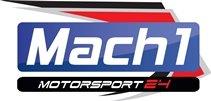Legger ut denne artikkelen, som jeg synes er meget bra skrevet av en legende innen karting 🙂
Karting legend Terry Fullerton is still a force to be reckoned with. He has a new line of Fullerton karts out this year and he’s also a top driver coach, helping talented karters get the most from themselves and their kart.
1. Costs are everyone’s main concern, and an average day at a European KF Championship round with a decent team is around £2500. So if you’re looking at a season’s racing which is between 80 and 100 days, it can be up to £250,000! The equivalent in Rotax is around £1000 per day. Some of the fathers that I’m involved with in karting are looking at the budgets at continuing in karting for one more year or moving into junior single-seaters in the BRDC F4 Championship in which the budget for a full year including plenty of additional testing is around £150,000. That is obviously a huge negative for the karting industry.
2. The KF concept was conceived very badly, it hasn’t worked out cheaper for anybody, in fact it’s more expensive. That stems from bad decision making and there’s a history of that in karting, if you go back to the introduction of the 135 class internationally. It killed the sport as there was a big divide between that and national racing as it wasn’t raced domestically. Why would manufacturers support the international racing when they’re not going to sell their product to the domestic market? And eventually they stopped doing it. There’s now no direct link between the international KF racing and the domestic scene in Britain with the cancellation of the class in Super One last season. We’re back to the same scenario as in 135.
The top-flight KF is supposed to be the pinnacle of the sport. It’s well supported in Europe and the racing is quite good. I believe it can be so much better though. Firstly, I’d remove the front-wheel brakes. It means you can have a very average driver as long as he’s fairly aggressive, who could overtake an excellent driver, just by firing up the inside. It’s too easy to do that and messes up racing for so many. For me there’s not a safety issue, you can have a double master-cylinder rear brake only. But why on earth do we have hand-operated brakes on a kart? It doesn’t prepare drivers for car racing, there’s no logic to it. It’s just copying motorbike racing. If they had all four brakes operated by the left foot, you could see some logic there. There’s also the cost aspect to consider.
3. There’s too many classes in karting. It would be nice if it could be structured in a better way to reduce the number and make choices for where you should be going, more obvious. When decent drivers turn 12 or certainly 13 years old, it’s confusing what they should be doing. Do they go to MiniMax or Junior Max? Do they do KF? There’s just too many choices.
4. One of the good things which has come out recently is the MSA British IAME Cadet Championship. It’s a brilliant little class, very even, the engines are very well made and it’s got rid of all the problems that were had with the Comer Cadet engines where they were being sold for £5000 each to make the kids a tiny bit faster. That appears to have gone and the grid numbers have increased massively. Those kids are the future of karting.
5. There’s an attitude in karting and in motorsport that if you’re a good driver, you should get out of karting and into car racing as soon as possible, at 14 or 15 years old. That’s absurd for a number of reasons. It’s bad for the karting industry because it’s limiting the numbers in the sport. It’s also bad for the kid’s experience because they gain so much proper experience driving a kart at a high level – much more valid experience than driving a racing car at a low level. I would make some regulation where you had to compete in a certain number of senior MSA-approved races and gain signatures on your licence before you were able to apply for a race car licence. So that could hold them until they were around 16 years old. Ultimately that would be better for both the driver and the sport of karting and motor racing.
I can never wrap my head around the fact that you go to a major karting event in both the UK and Europe, and the race organiser will have made an arrangement with a race team or racing manufacturer to have a racing car display at the meeting. They really haven’t thought this through, have they? This is trying to poach karters, who have spent their hard-earned money in the industry and get them out of it as soon as possible. They even go around the paddock trying to sign people up. That shouldn’t be allowed to happen.
6. I wouldn’t allow any running of karts in the paddock. Fully extending the motor drives so many people mad. I now had Tinnitus in my left ear because of kart noise. It has to be done to set the jetting but other ways around it can be found. One way is to have the variable jet carburettor. That way you don’t have to be dead right with the jetting in the paddock.
7. The rev limiter in both KF and KF Junior is deteriorating the class. If you’re a good driver and get a run out of a corner, you can get towards the end of the straight and hit the limiter at 15,000rpm. That prevents you from overtaking. You never see KF drivers making moves at the end of the straights anymore. I looked at videos from Jenson Button racing in the Formula A World Championship final in 1995. It was a brilliant race with lots of overtaking, as there were no front-wheel brakes or rev limiters.
There are alternative ways of limiting the revs. Depending on the track, you could stipulate the highest gearing each driver is allowed to use. You can use anything up to that but not above it. You don’t need a rev limiter. It’s also one more thing which can go wrong. The only way you’ll see someone being passed on a straight is if they’ve got a different gearing on.












